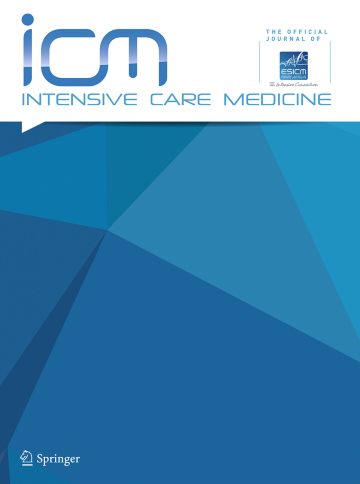Invasive candidiasis in intensive care medicine: shaping the future of diagnosis and therapy.
IF 21.2
1区 医学
Q1 CRITICAL CARE MEDICINE
引用次数: 0
Abstract
BACKGROUND Invasive candidiasis (IC) remains one of the most challenging infections in critical care, contributing significantly to morbidity, prolonged organ support, and mortality among intensive care unit (ICU) patients. The clinical landscape of IC is evolving, with increasing recognition of Candida non-albicans species and other yeasts formerly classified as Candida spp., alongside emerging multidrug resistance and growing complexity in host immune profiles. OBJECTIVES This contemporary, multidisciplinary narrative review-authored by intensivists, infectious diseases specialists, clinical microbiologists, and pharmacologists-aims to provide ICU clinicians with practical, up-to-date insights into the diagnosis and management of IC. To maintain clinical focus, the review excludes non-IC fungal infections and non-ICU patient populations. METHODS Relevant literature and expert consensus were critically reviewed to summarize current diagnostic and therapeutic approaches for IC in critically ill patients. Emphasis was placed on pragmatic clinical application, diagnostic limitations, antifungal stewardship, and personalized therapeutic decision-making. RESULTS Despite the availability of novel antifungal agents with improved pharmacokinetic properties, treatment success in IC depends equally on timely and accurate diagnosis and individualized, context-aware therapy. Blood cultures continue to demonstrate limited sensitivity (~40%). Non-culture assays, including β-D-glucan and molecular diagnostics, provide faster detection and high negative predictive value but suffer from low positive predictive value and inconsistent adoption in clinical practice. The absence of validated host-derived biomarkers further limits risk stratification, antifungal discontinuation decisions, and personalized care. CONCLUSIONS Emerging antifungal agents, stewardship strategies, and multidisciplinary care models are essential to improve clinical outcomes and reduce antifungal resistance. This review underscores the need for integrated, team-based diagnostic and therapeutic approaches to close persistent gaps in IC management, ultimately promoting more effective, timely, and individualized care for critically ill patients with Candida spp. INFECTIONS侵袭性念珠菌病在重症监护医学:塑造未来的诊断和治疗。
背景:侵袭性念珠菌病(IC)仍然是重症监护中最具挑战性的感染之一,对重症监护病房(ICU)患者的发病率、延长器官支持时间和死亡率有重要影响。随着对非白色念珠菌种类和以前被归类为念珠菌的其他酵母菌的认识增加,以及宿主免疫谱中出现的多药耐药性和日益复杂的情况,IC的临床前景正在发展。目的:这篇由重症医师、传染病专家、临床微生物学家和药理学家撰写的当代多学科叙述性综述,旨在为ICU临床医生提供实用的、最新的IC诊断和管理见解。为了保持临床重点,该综述排除了非IC真菌感染和非ICU患者人群。方法回顾相关文献和专家共识,总结目前危重患者IC的诊断和治疗方法。重点放在实用的临床应用,诊断局限性,抗真菌管理和个性化的治疗决策。结果:尽管有改善药代动力学特性的新型抗真菌药物可用,但IC的治疗成功同样取决于及时准确的诊断和个性化的情境感知治疗。血培养继续显示有限的敏感性(~40%)。非培养试验,包括β- d -葡聚糖和分子诊断,提供更快的检测和高阴性预测值,但存在低阳性预测值和不一致的临床应用。缺乏有效的宿主来源的生物标志物进一步限制了风险分层、抗真菌停药决定和个性化护理。结论新出现的抗真菌药物、管理策略和多学科治疗模式对改善临床结果和降低抗真菌耐药性至关重要。本综述强调需要采用综合的、以团队为基础的诊断和治疗方法,以缩小IC管理中持续存在的差距,最终促进对念珠菌感染危重患者更有效、及时和个性化的护理
本文章由计算机程序翻译,如有差异,请以英文原文为准。
求助全文
约1分钟内获得全文
求助全文
来源期刊

Intensive Care Medicine
医学-危重病医学
CiteScore
51.50
自引率
2.80%
发文量
326
审稿时长
1 months
期刊介绍:
Intensive Care Medicine is the premier publication platform fostering the communication and exchange of cutting-edge research and ideas within the field of intensive care medicine on a comprehensive scale. Catering to professionals involved in intensive medical care, including intensivists, medical specialists, nurses, and other healthcare professionals, ICM stands as the official journal of The European Society of Intensive Care Medicine. ICM is dedicated to advancing the understanding and practice of intensive care medicine among professionals in Europe and beyond. The journal provides a robust platform for disseminating current research findings and innovative ideas in intensive care medicine. Content published in Intensive Care Medicine encompasses a wide range, including review articles, original research papers, letters, reviews, debates, and more.
 求助内容:
求助内容: 应助结果提醒方式:
应助结果提醒方式:


